by Gil S. Perl.
Route 195 cuts across the midsection of New Jersey. Travel eastward from the state capital of Trenton toward the Atlantic coast, take exit 28A for route 9A South and you’ll find yourself in a rather nondescript section of East Coast suburbia. Continue heading south, though, for a mere six miles and, without warning, everything begins to change. Wreaths on the doors are suddenly exchanged for mezuzot (small decorative casings nailed to a doorpost containing a biblical passage hand calligraphed onto parchment); pick-up trucks make way for mini (and not-so-mini) vans; jeans, tee-shirts and baseball caps disappear as black dress slacks, white dress shirts, and black fedoras emerge in their place. You’ve entered Lakewood Township. A rapidly growing community whose culture is distinctly Jewish – and distinctly Lithuanian.
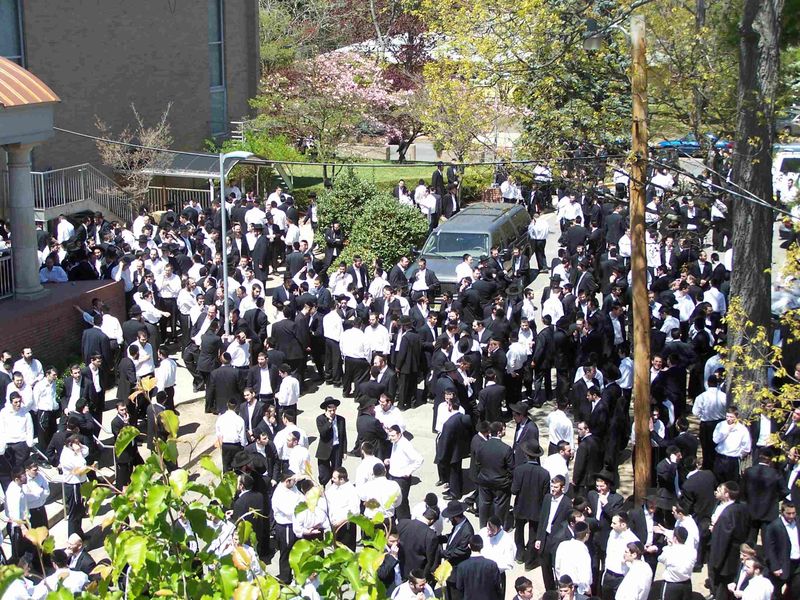
At the heart of the Lakewood community is a pulsating institution of higher learning called Beis Medrash Gavoha and informally referred to as the Lakewood Yeshiva. Unlike other institutions of higher learning, the 6,500 men who attend the Lakewood Yeshiva, ranging in age from eighteen until well into adulthood, officially study only one subject: Talmud, the massive and meandering redacted transcripts of legal debates from the Babylonian academies of Jewish Law dating from first few centuries of the Common Era. And, in a manner far more similar to nearby Princeton’s famed Institute for Advanced Study than to the average American undergraduate or graduate program, the purpose of Talmudic study in Lakewood and in similar institutions throughout New York, Northern New Jersey, Philadelphia, Baltimore, Chicago, and Los Angeles is not the pursuit of a degree or preparation for a profession. It is study for the sake of study alone.
To understand how these Yeshiva communities across the country and across the globe have emerged over the past century with the singular purpose of promoting and supporting Talmud study for men, one merely has to trace the history of the Lakewood Yeshiva back to its roots in modern day Belarus – a region forever cemented in the hearts and minds of Jews as “Lita” or Lithuania.
The Lakewood Yeshiva was officially launched in 1942 as a kollel, a small Talmudic institute for young married men, located in White Plains, New York. Its founders were graduates of a similar type of institution in Kelmė, Lithuania who had emigrated to the United States several years earlier. With the arrival of Rabbi Aharon Kotler a year later, it moved to its current location in Lakewood, New Jersey and began its emergence as the pre-eminent institution of Talmudic learning outside of Israel.
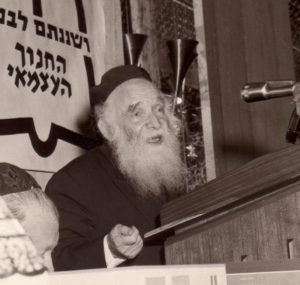
Rabbi Kotler (1891–1962) was born in Śvisłač, in the South-West Grodno (Gardinas) region of Belarus. Orphaned at an early age, he was raised by his uncle, a prominent rabbinic scholar who lived in Minsk. Hailed as a child prodigy, the young Aharon Kotler followed what had become the traditional path for Lithuanian Jewish boys who showed intellectual promise: he was sent to study in a Yeshiva, an academy of Talmudic learning located in a remote, and therefore distraction-free, hamlet in the Belarusian countryside. In Kotler’s case, the destination was the northern town of Slabodka (Vilijampolė), today a suburb of Kaunas [editor’s note: see map]. There, he studied for several years under the direction of the Yeshiva’s famed head, Rabbi Moshe Mordechai Epstein (1866–1933). Epstein modeled his yeshiva in Slabodka after the one he himself had attended as a young man, located halfway between Minsk and Vilnius in the tiny town of Vałožyn (Valažinas). And it is there, at the Etz Hayyim Yeshiva in Vałožyn, that the story of today’s Yeshiva communities begins
The act of studying God’s word, referred to by Jews as Torah study, is as old as Judaism itself. The command to study and to teach is found in Deuteronomy 6:6-7 and is repeated almost verbatim a few chapters later in Deuteronomy 11:18-19. So important are these verses in Jewish thought, practice, and law that both sets of verses are enshrined in the Shema prayer, which Jews recite three times daily. Through Judaism’s first few millennia, this command to study God’s word and to teach it to one’s children was fulfilled through the study of written Torah scrolls – parchment containing the Five Books of Moses – accompanied by oral traditions which explicated the text, expanded it, and applied it to an ever changing geopolitical and social reality. By the seventh century of the Common Era, those oral traditions and the debates surrounding them had been compiled and edited into a massive sixty-three volume Aramaic text known as the Talmud. From then on, Talmud became the primary object of Jewish study.
Despite the unquestioned and almost unrivaled importance of Talmudic study in the hierarchy of traditional Jewish values, for most of the Jewish community through most of Jewish history it remained a rather elusive ideal. Jewish communities in the Middle Ages did succeed in educating their children – both boys and girls – to read and write Hebrew, and to be conversant in the basic stories and rituals at Judaism’s core. For the vast majority of Jewish youngsters, however, this education came to a halt at the age of twelve for girls and at age thirteen for boys. At that point, girls took their place in the home, assisting and learning from their mothers, while boys began to learn a trade. Continued Torah study at that time took the form of biblical verses and Talmudic passages recited as part of prayer services, a short class in the evenings between the afternoon and nighttime prayers, or a homily delivered on Sabbath afternoons. Intensive, full-time Talmud study, was largely limited to a tiny cadre of precocious boys who showed an aptitude for continued study and whose families had the rare financial wherewithal to support such a path. Those boys were generally sent to a town where the local rabbi was known for his erudition. There they’d study together in the synagogue or in an annex known as a Beis Medrash (a House of Study) and pay for room and board from the local householders. When a young man completed several years of study, his rabbi-mentor would “ordain” him with a letter of approbation, and he’d begin interviewing for his own rabbinic position at the helm of a small Jewish community.
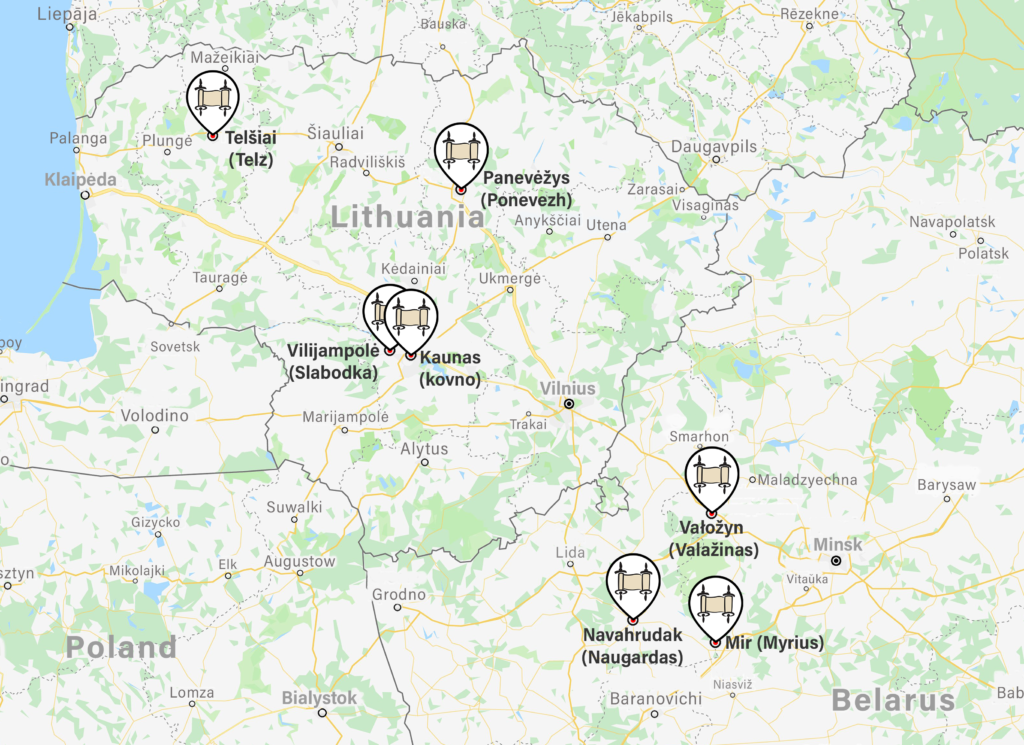
The transformation of these small rather ragged medieval yeshivas into the academic and cultural juggernaut of today, began in the environs of Vilnius in the late 18th century. For several decades, the populist Hasidic movement, which placed an emphasis on spirituality and emotion over intellect and analysis, had been spreading with breathtaking speed through the Jewish communities of Poland and Ukraine. In the lands of Lithuania, however, a movement of opposition galvanized. Its rallying cry was a reminder to the populace that intensive, analytical Torah study had been a fundamental tenet of traditional Judaism since its inception and that its de-emphasis in the Hasidic worldview, in favor of more emotional and mystical connections with God, was tantamount to heresy. The figure most associated with this position was a reclusive rabbinic genius living in Vilnius named Eliyahu ben Shlomo Zalman (Elijah son of Solomon Zalman), also known as the Vilna Gaon. His erudition was unrivaled anywhere in the Jewish world and his opposition to Hasidism was unyielding and fierce. Following his death in 1797, much of the Lithuanian community turned to one of the few rabbinic scholars who had succeeded in establishing a long-term, personal connection with the almost hermetic Vilna Gaon, a man by the name of Rabbi Hayyim of Vałožyn (1749-1821).
Referred to as the great “student” of the Vilna Gaon (the Vilna Gaon, who never taught in any educational institution and never held an official rabbinic position didn’t have any “students” in the classical sense of the word), Rav Hayyim, as he is known, is most responsible for creating both the theological and institutional framework that would translate the oppositional rhetoric of Lithuania’s anti-Hasidic rabbinic establishment into a full-fledged, sustainable movement. His work of theology, entitled Nefesh Ha-Hayyim (published posthumously in 1823), offers biblical, Talmudic, and mystical support for the idea that Talmud study for its own sake (“Torah li-shmah”) is the ultimate act of Jewish worship, an act responsible for nothing less than the sustenance of the world. As such, it was critical for the Jewish community to develop means by which more young Jewish men could engage in such holy work, unfettered by the world’s profane distractions and untethered from the necessity of securing financial support.
Thus, in 1802, Rabbi Hayyim of Vałožyn circulated a letter in which he set out of a vision for a new type of yeshiva. Unlike the yeshivas of old, which were located mainly in large cities (because the large cities could afford to hire the most respected scholars and a yeshiva was no more than a cluster of students who came to study with a rabbi of note), Rav Hayyim’s yeshiva would be founded in his hometown rural hamlet of Vałožyn (Valažinas). There, young men from all over the world would gather to learn in a place dedicated for study, with faculty hired specifically for that purpose, and with a curriculum designed to achieve specific aims. What’s more, as this yeshiva would be there to serve the religious aims of the global Jewish community, its support would come from the entirety of the Jewish community as well. Through a system of emissaries throughout the Jewish world, Rav Hayyim would raise the funds necessary to pay the school’s faculty and to provide room and board to the its students, lest admissions be limited to the wealthy few.
In 1806, the building of the Etz Hayyim (Tree of Life) Yeshiva in Vałožyn opened with Rav Hayyim at its head. In 1854, Rabbi Naftali Tzvi Yehuda Berlin (1816-1893), husband of Rav Hayyim of Vałožyn’s granddaughter, took over the reigns of the institution, a position he’d hold until its closing in 1891. Under his guidance, hundreds of young men flocked to the yeshiva each year in fulfillment of a Jewish ideal that had been yearned for, yet largely unattained, in centuries past: full-time, intensive, Talmud study.
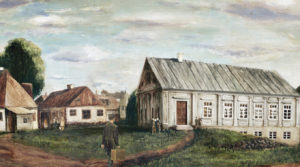
By 1815, a similar institution opened 100 kilometers to the south of Vałožyn (Valažinas) in the Belarusian town of Mir (Myrius). Over the next few decades the model would be copied over and again, as “new” yeshivas opened in Telšiai (Telshe), Vilijampolė (Slabodka), Slutsk (Sluckas), Eišiškės (Eisheshok), Lumza (Lomža), Raduń, Kamenetz (Podolės Kamenecas), and Novhardik (Naugardas), to name a few.
Perhaps greater than their impact on the education of Polish and Lithuanian Jewry (after all, a few thousand students in a population that numbered close to 5 million in 1900, is still rather insignificant), was the impact of these institutions on its culture. Everything from the political structure (where Heads of the Yeshiva emerged as a powerful communal leaders), to the marriage market (where Yeshiva students supplanted the scions of wealthy families as the most desired grooms), and the role of Jewish women (who were excluded from actual study in the yeshiva, but charged with supporting it by earning a living and by raising children who yearned for a life of Torah study) recalibrated in response to the rise of the yeshivas.
Much as the influence of elite universities in the United States today can be felt everywhere from daycare centers to recreational soccer fields, and massive amounts of resources are aimed at the highly unlikely scenario of a student gaining acceptance to its hallowed halls, so too the yeshivas in Lithuania exercised an outsized influence on the social and cultural life of 19th century Lithuanian Jewry.
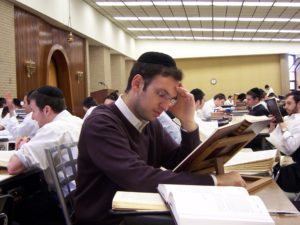
When, in the late 19th and early 20th century, Jews from the lands of Poland and Lithuania began fleeing persecution to the shores of the United States, it is not surprising that they sought to bring their treasured culture along with them. Thus, in 1943, Rabbi Aharon Kotler sought an American “hamlet” that would approximate his experience in Slabodka (Vilijampolė) and his teacher’s experience in Vałožyn. There, amidst what was then farmland in central New Jersey, he would create an oasis of Talmud study, which would allow large numbers of American young men to engage in the ultimate Jewish act, free of the distractions of the big city and the burden of financial responsibility. And, as happened a century earlier in Belarus, a community emerged around this new yeshiva, in which the ideal of full-time Torah study infused every aspect of social, cultural, and religious life. Much like its predecessor in Vałožyn, the Lakewood Yeshiva then spawned offspring which dot the landscape of today’s American Jewish community. While each one looks a little different and all have adopted elements of modernity that would never have been seen in their progenitors, all remain steadfastly committed to carrying forth the legacy of their distinctly Lithuanian Jewish heritage into the 21st century.
———————————
Additional photos:
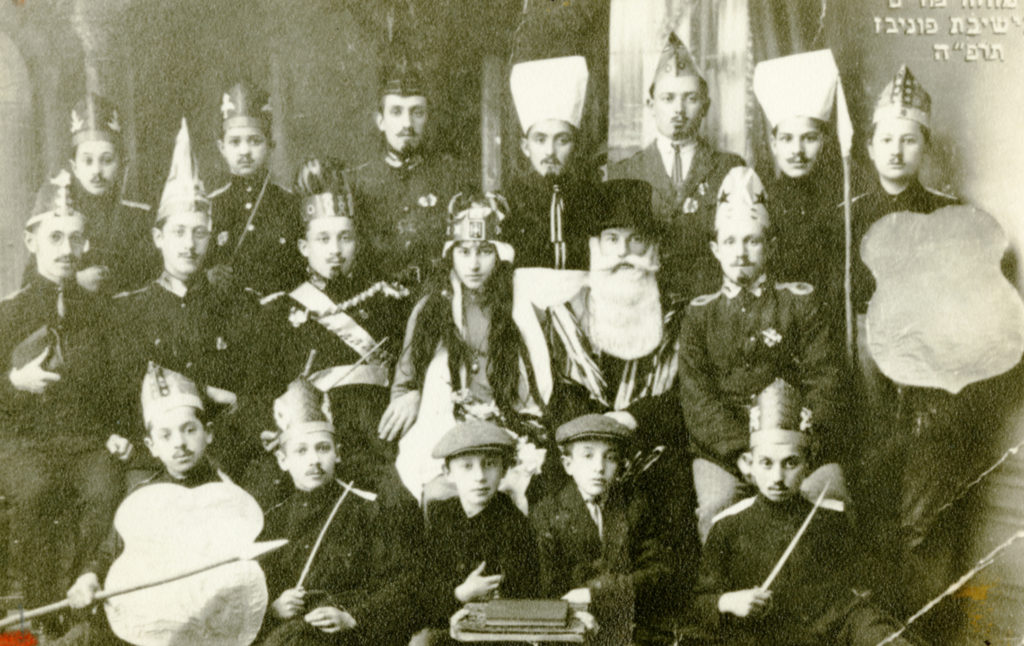

—————————————————————
Rabbi Gil S. Perl is a noted author on topics of Jewish religious history and Torah Scholarship and is current Head of the Kohelet Yeshiva in Merion Station, Pennsylvania.
 DRAUGAS NEWS Lithuanian World Wide News in English
DRAUGAS NEWS Lithuanian World Wide News in English
